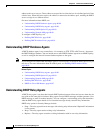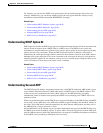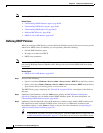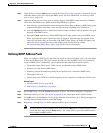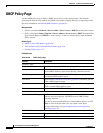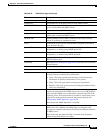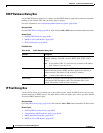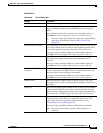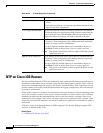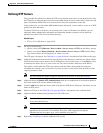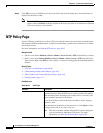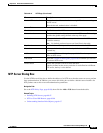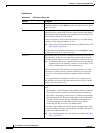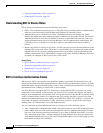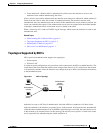
60-96
User Guide for Cisco Security Manager 4.4
OL-28826-01
Chapter 60 Router Device Administration
NTP on Cisco IOS Routers
NTP on Cisco IOS Routers
The Network Time Protocol (NTP) is the standard for time synchronization between network devices.
Synchronized time enables you to correlate syslog and other debug output to specific events, which is
essential for troubleshooting, fault analysis, and security incident tracking. Time comparisons are not
possible without precise time synchronization between the logging, management, and AAA functions
occurring in your network.
NTP uses the concept of a stratum to describe how far removed a machine is from an authoritative time
source. For example, a stratum 1 time server is directly attached to a radio or atomic clock. NTP then
distributes the time from this authoritative time source across the network. A stratum 2 time server
synchronizes with a stratum 1 time server; a stratum 3 time server synchronizes with a stratum 2 time
server and so on. One NTP transaction per minute is sufficient to synchronize two machines to within a
millisecond.
NTP runs over the User Datagram Protocol (UDP) using port 123. Security Manager supports NTP
version 3, as defined in RFC 1305.
Related Topics
• Defining NTP Servers, page 60-97
Lease Never Expires When selected, the DHCP server permanently assigns IP addresses to
its clients.
When deselected, addresses are leased for a predefined amount of time,
as defined in the Time Length field.
Time Length (DD:HH:MM) Applies only when the Lease Never Expires check box is deselected.
The duration of the lease provided to each IP address assigned from this
IP pool (using the format DD:HH:MM). After the lease expires, the
assigned IP address is no longer valid and is returned to the pool.
Option 66 (IP Addresses) The IP address of the TFTP server used to provide configuration files
to IP phones. These configuration files define parameters required by
IP phones to connect to Cisco CallManager.
Enter up to eight (8) network addresses or network/host objects, or
click Select to select an object from a list or to create a new one.
Note This option is functionally similar to option 150. Either or both
options may be used.
Option 150 (IP Addresses) The IP address of the TFTP server used to provide configuration files
to IP phones. These configuration files define parameters required by
IP phones to connect to Cisco CallManager.
Enter up to eight (8) network addresses or network/host objects, or
click Select to select an object from a list or to create a new one.
Note This option is functionally similar to option 66. Either or both
options may be used.
Table 60-40 IP Pool Dialog Box (Continued)
Element Description



